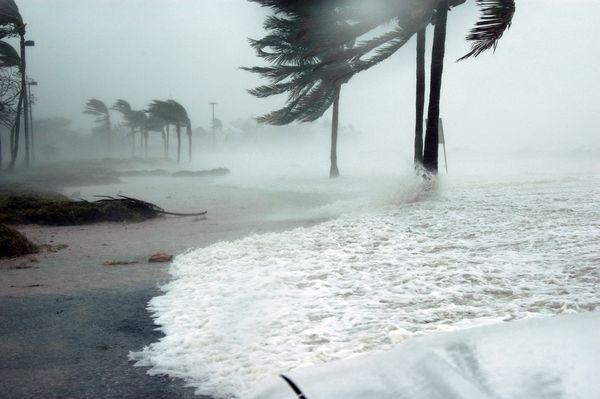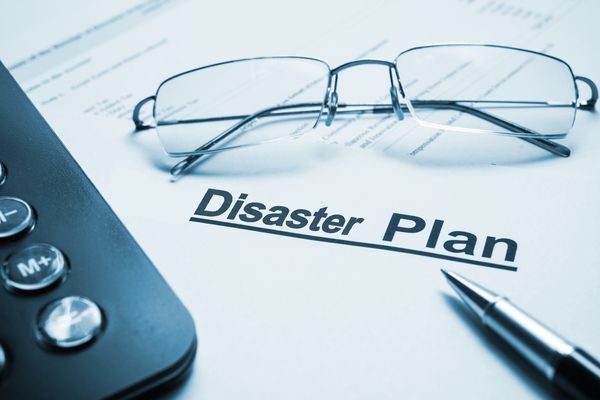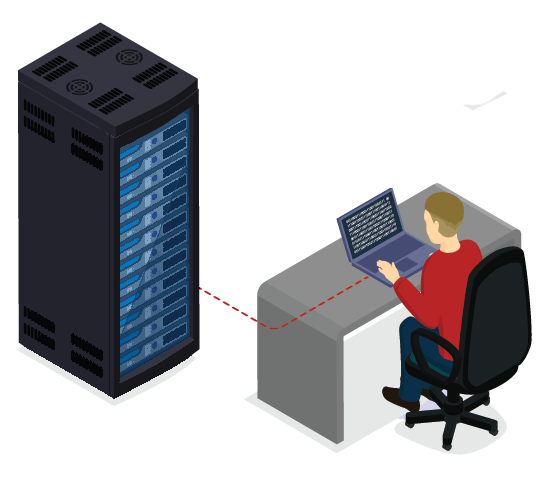Disaster Recovery Solutions
What Is Disaster Recovery?
Disaster Recovery (DR) is the process an organization uses to access the software, data, and hardware that is needed to resume the performance of normal business operations in the event of a natural disaster or a disaster caused by humans. In other words, DR is the automatic transfer of data or other digital assets to a secondary server/facility. For example, if your server is housed within a data center which is affected by a natural disaster, such as a hurricane which disables power to the facility for an indefinite amount of time, your business can still access the critical information needed to stay online because there was an IT disaster recovery plan in place. The purpose of these plans is to schedule data backups at predetermined intervals (e.g. every day, week, month, etc.).

Despite the disaster, business operations can resume as normal on the backup server—at least until power is restored to the primary data center.
How to Protect the Data That Drives Your Business
Every business, regardless of size, needs a disaster recovery plan (DRP)—and there are many factors to consider. Most DRPs focus on recovering the data and hardware which may have been damaged or lost but forget about the data center’s manpower. One has to consider, however unlikely, that whereas a building fire will impact hardware, an epidemic illness will affect the data center’s staff. Both disasters must be accounted for when creating a DRP. Disaster recovery plans should be taught to a business’s staff and practiced so that everyone knows their part to play should a disaster occur. Moreover, a DRP should be routinely updated to adapt to new factors, such as:
- New employees or offices should be DRP initiated
- New hardware/software should be incorporated into the DRP

Photo credit: cuna.orgTo ensure there’s a network disaster recovery plan in place and that it performs its duties during a disaster, all facets of the business should be updated of the DRP, which itself needs to be consistently updated. This complexity is why backup disaster recovery plans are usually a part of a much larger Business Continuity Plan.
Disaster Recovery Plan Checklist:
- Contact Information: Include a list of all pertinent contact numbers from your service provider, emergency services, client and/or vendors as well as employee contact information.
- Assign Roles: Everyone should know their role during an emergency. If your primary role is to contact your service provider at the colocation facility make sure you know who that person is, how to reach them, as well as what to ask.
- List of Applications: A list of essential software applications must be complied in order to aid the data center recovery process, including but not limited to: application names, technical details, server names, and owner contact information
- Network Diagram: Depicts the signal path or critical IT infrastructure including switches, network cabling; I/O ports, firewall locations and/or bottleneck routes.
- Backup Location Address: Providing the correct address and location of a backup facility is essential, though sometimes overlooked. Never assume employees know the exact route to the disaster recovery location. Provide parking information, contact numbers, and any other pertinent info.

Photo credit: ltnow.com
- Supply Resource Numbers: At times, staff can be tied up at the disaster recovery facility for hours on end. Make sure they have access to essential supplies, whether it is hardware, generator power, or something so simple as a pizza delivery number. Sooner or later, they’re going to have to replenish supplies. Don’t leave your workers hanging during an emergency.
- Best Practice Protocol: It is likely you will have to deal with irate customers who cannot access your website (or other online resources). Make sure every employee is up-to-date on best practice protocols. This may include things like what to say and what not to say to a company shareholder or client. Knowing what to say and how to act during an emergency will help maintain company integrity all across the board until you are able to resume normal business operations.
- Risk Assessment: Identifying any physical or environmental threat that may hinder the disaster recovery process is essential. Proper measures must be taken to avoid potential threats.
Disaster Recovery Solutions
A successful IT disaster recovery plan requires proper testing of procedures beforehand. A strong pre-implemented business continuity plan ensures disaster recovery efforts run smoothly (in such a way that normal business transactions aren’t affected and thus remain constant. Better planning will decrease the risk of organizational failures during times of disaster. Hopefully the business continuity and disaster recovery plan a business puts in place will be bulletproof. However unlikely, disaster are unpredictable—so while may seem like overkill today, your business will be better off if you prepare for the worst before the worst happens.

READY TO GET STARTED?
Our Data Center Locations
LOS ANGELES
624 S Grand Ave, Suite 900, Los Angeles, CA 90017
707 Wilshire Blvd, Suite 400, Los Angeles, CA 90017
600 W 7th St, Suite 600, Los Angeles, CA 90017
530 West 6th Street, Suite 903, Los Angeles, CA 90017
650 S Grand Ave, Suite 300, Los Angeles, CA 90017
SAN FRANCISCO
200 Paul Ave, Suite 400, San Francisco, CA 94124
CHICAGO
350 E Cermak Rd, Suite 8, Chicago, IL 60616
600 S Federal St, Suite 100, Chicago, IL 60605
800 E Business Center Dr, Mt Prospect, IL 60056
1808 Swift Dr, Suite A, Oak Brook, IL 60523
2200 Busse Rd, Elk Grove Village, IL 60007
MIAMI
PHILADELPHIA
9999 Hamilton Blvd, Unit 4, Breinigsville, PA 18031
1000 Adams Ave, Eagleville, PA 19403
3949 Schelden Cir, Bethlehem, PA 18017
CONNECTICUT
108 Bank St., 5th Floor, Waterbury, CT 06702
BOSTON
34 Saint Martin Dr, Suite 3, Marlborough, MA 01752
NEW JERSEY
100 Delawanna Ave, Suite 200, Clifton, NJ 07014
275 Hartz Way Secaucus, NJ 07094
NEW YORK
60 Hudson St, 9th Floor, New York, NY 10013
111 8th Ave, Floor 16, New York, NY 10011
11 Skyline Dr, Suite 11, Hawthorne, NY 10532